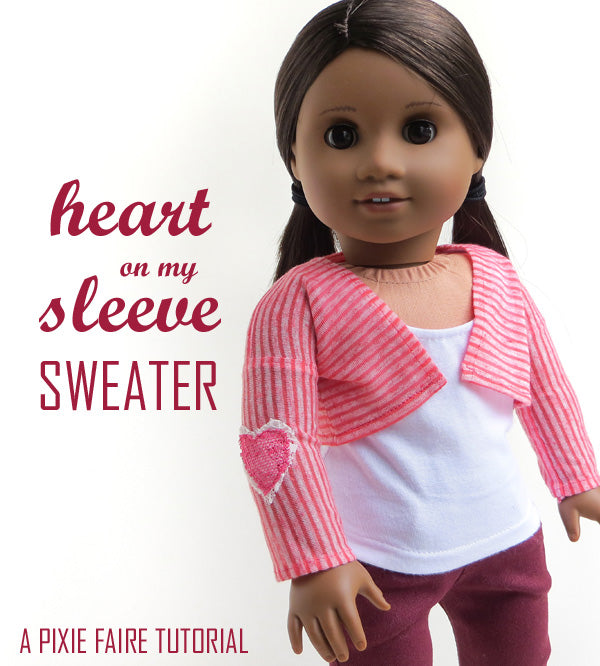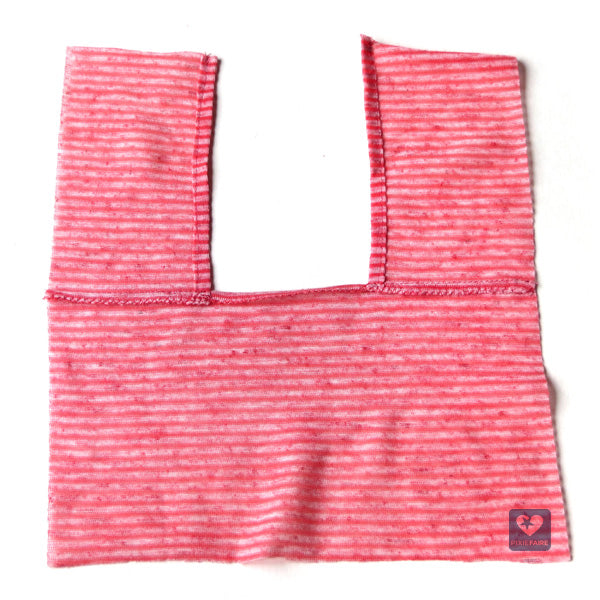
Hi Everyone! Welcome to the topic, Sewing With Zero Waste. You might be thinking, "How do you sew without scraps? Is it possible?" Yes, you can! Not every time, but there are ways to do just that is the pattern is designed with "no scraps" in mind. Over the course of this topic, we will show you a few examples of zero waste designs; then we will wrap things up with a fun look at using those little scraps and turning them into cute design features!
The topic will be divided into 4 parts:
- Part 1: Topic Overview and an in-depth look at what Zero-Waste Sewing is all about.
- Part 2: Sewing The Envelope Shrug
- Part 3: Sewing The Hooded Bog Coat
- Part 4: Got Scraps? Turn your scraps into unique and interesting fabric!
What is Zero-Waste Sewing?
Zero-waste fashion is when a garment (or accessory) is made without producing excess waste, with the purpose of making the most of the piece of fabric and reducing the amount of fabric that ends up in landfills.
The history of zero-waste fashion has risen in popularity in western culture in the last five years, but its extent is much further back historically. We can see examples of zero-waste ingrained in ancient cultures through garments like the Japanese Kimono and the Indian Sari. Both of these cultural garments are essentially cut as rectangles and then draped and manipulated to become their more recognizable forms.
For most of history fabric has been expensive and difficult to come by, which made people want to maximize it’s use to get the most out of their money. This is essentially the mindset of zero-waste fashion. It wasn’t until the Industrial Revolution when this mindset changed. People began to mentally devalue textiles when they could be produced more quickly and economically. It became more acceptable to waste things and not use every last inch of it when it didn’t cost an arm and a leg to procure it.
This mindset was amplified with the rise of fast fashion in the 1980s. Fast fashion refers to the apparel industry’s ability to quickly produce garments that are cheap and on-trend but shoddily made, horrible for the environment, and, more often than not, made by an underpaid and underprivileged labor force. Fast fashion is made to be worn today and thrown away as soon as the trends turn over.
Sustainability (and with it zero-waste fashion) has become a valued attribute in the industry because our landfills are quickly overflowing with fast fashion.
The Shocking Stats: It was estimated that in 2015 over 15% of fabric used in the commercial fashion industry ended up in landfills. Seeing as the commercial fashion industry uses approximately 400 billion square yards of fabric, that’s about 60 billion square yards of fabric deemed unusable in one year. This doesn’t even account for the amount of fabric that is thrown away by the consumer after they deem a garment unusable or unwanted. It’s estimated that Americans throw away on average 14 million and 17 million tons of clothes and textiles. Fabric in landfills can/will take up to 200 years to fully disintegrate and in the meantime let off greenhouse gasses and can leak chemicals and toxic dyes into our ground water systems. EEK!
The Industry Response: In the last five years, the prominence and importance of sustainability has risen in the fashion industry. Zero-waste fashion has been a major development within the sustainable fashion movement in the last several years. Because the goal of zero-waste sewing is to use less fabric to create less waste, it is both environmentally friendly and economical to the consumer.
How Zero-Waste is Achieved: There are two techniques for utilizing zero-waste strategies: zero-waste design and zero-waste production.
- Zero-waste design is used in the design and cutting process of garment construction. The type of pattern pieces that are required and how they are cut can be crucial to creating a zero-waste (or at least less-waste) project (see optimization of cutting section).
- Zero-waste production is implemented when a zero-waste strategy was not used in the design and/or cutting process and there are leftover scraps (see upcycling section). The ways to create zero-waste or reduce existing waste are infinite with just a little creativity and ingenuity!
Achieve Zero-Waste Through Upcycling
Upcycling is the foundation of the second zero-waste sewing strategy, production. The concept of upcycling comes from the ability of taking something old and breathing new life into it. This can be done by adding patches, reusing fabrics, and turning scraps into new projects. In order to make upcycling zero-waste, use already existing materials instead of searching out new ones. For example, using the fabric from old bedsheets to create unique garments is a great way to upcycle. If you have a shirt that you no longer wear but you can’t donate it because of a stain or hole, use the remaining good parts of it to create new garments for your doll. If you made a project and still have leftover scraps, turn them into headbands, purses, or even underwear!

You could even use those leftover scraps and piece them together patchwork-style (kind of like a quilt) to create a one-of-a-kind textile to use on a pattern. Watch for our demo of this concept in Part 4.
Achieving Zero-Waste Through Optimization of Cutting/Placement
The first major part of zero-waste sewing is zero-waste design. For those of you who are fans of jigsaw puzzles this is a challenge you will love! An easy way to create zero waste (or at least less waste) is to optimize your fabric through pattern piece placement when using a standard pattern. Patterns nearly always provide cutting guides at the beginning, but that doesn’t necessarily mean you have to follow them. If you can find ways to tweak the placement of pieces to save space, then you can produce less fabric waste. You can even try cutting in a single layer rather than on the fold, thereby fitting more pieces in while still following the grainline. Try selecting a non-directional or a two-way directional print as these would allow you to place pattern pieces in different directions (upside down for example) so that you can better interlock your pattern pieces together.
If you’re not using a standard pattern and are using a specifically zero-waste pattern, then placement and fabric choice become all the more important. A zero-waste pattern is typically made so that you only use a certain-sized rectangle of fabric. Some patterns have you cut out pieces with no scraps leftover, whereas other patterns might just have you cut seam lines into the rectangle. Either way, fabric print will be important! In order to make the garment not look off-kilter, choose a non-directional or a two-way directional fabric (although a non-directional print would be best for the latter type).
Watch for us to demonstrate this concept in Parts 2 and 3 with the Envelope Shrug and Hooded Bog Coat pattern designs.
Looking for a project to sew this week?
Here's a simple project to get you started! With one long rectangle cut into a few smaller sections, you can create a cute little bolero style cardigan for your doll! Follow along to see how.

Show your doll some love by making her this fun little sweater. It goes together super fast, and all it takes is just five rectangles...
The tiny heart patch is an added embellishment, feel free to leave it off if desired.

Suggested Fabric: You can use a stretch lace or a lightweight knit -- but in any case, your fabric needs to stretch a little to be sure it'll fit right.

Cut ONE long 4-3/4" tall x 24" long rectangle.
Cut it into these five rectangles:
One for the back, 4-3/4" x 8"
Two for the front, 4-3/4" x 3-1/4"
Two for the sleeves, 4-3/4" square
And, optionally, some little hearts, circles, or other shape out of coordinating fabric if desired for the elbows.
To hem the Center Front edges, press under one long edge of each front piece 1/4" twice, to form a double-turn hem. Topstitch in place.

Pin the fronts to the backs along the top edge. Make sure you have right sides together, and that the hemmed edges are facing each other. Stitch, and then zig-zag along the entire edge (including the un-stitched section of the back).

Press both seams to the back, and then also press under 1/4" along the un-stitched back edge in between the two fronts. This will become the back neckline. Topstitch everything down nicely.
Next, hem one edge of each sleeve. If you're using a stripe like me, go ahead and hem one of the edges where the stripes meet it vertically -- that way the stripes will be oriented in a nice direction on the finished sweater.

You can also stitch your little heart applique down at this point too, place it centered on the sleeve.
Opposite the hemmed edge, mark the middle of each sleeve with a pin.

With right sides together, matching the pin to the shoulder seam, pin and sew the sleeves to the sweater body. Zig zag or serge over this seam when you're done.
With right sides together, fold the sweater in half at the shoulders, and pin and stitch the underarm/side seams.

Finally, hem the lower edge. Give the sweater a good press, and then style it into your doll's wardrobe! Share your projects with us, we'd love to see them!

Next week, in Part 2 we'll take a look at sewing the Envelope Shrug.
10 Comments
Leave a comment



















Carol
August 13, 2021
Love this topic. My mother was upcycling way before it was fashionable. I’m so glad I paid attention. I only purchase new material if I absolutely have to.